

This feature is only available to premium members
Check out our Premium Accounts
Select your Account Type
I'm a Parent Add up to 6 childrenAccess thousands of engaging resources that will help your child succeed and gain confidence in their abilities.






Our printable worksheets are perfect for any teacher, parent, or homeschooler who is looking for fun and engaging activities to do with their children. Save yourself some valuable planning time and download these great resources completely free of charge.
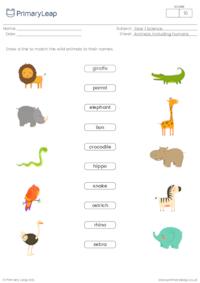
This word and picture matching worksheet is a fun and engaging activity that will help teach students about different wild animals. Children will love identifying the different wild animals and matching their names to the pictures. This is a fantastic resource that can be used at home or in the classroom.
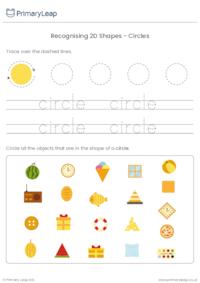
This fun maths worksheet will help your preschoolers recognise circles. There is a tracing activity where children trace over the dashed lines to draw a circle and then spell the word. Children then circle all of the objects that are in the shape of a circle. This maths resource will help little ones recognise circular objects in their everyday lives.
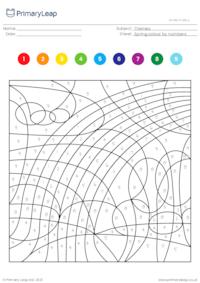
This fun spring themed colour by number activity will help children recognise numbers 1 - 9. Children follow the number and colour chart to colour the spring landscape.
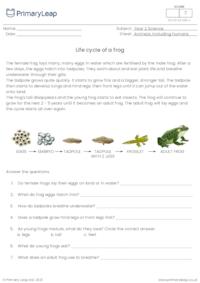
This is a great introduction activity to the life cycle of a frog. Students read through the text and answer the questions. There is a picture of the life cycle of a frog so students can see the different stages.
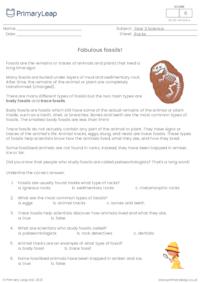
Fossils are the remains or traces of animals and plants that lived a long time ago! Many fossils are buried under layers of mud and sedimentary rock. Students learn some interesting facts about body fossils and trace fossils and answer the multiple-choice questions.
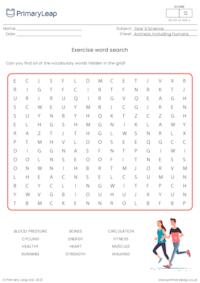
This fun word search includes words that are associated with exercise. See if your students can find all of the words hidden in the grid. To make it more interesting you could see how many words they can find in a given time!
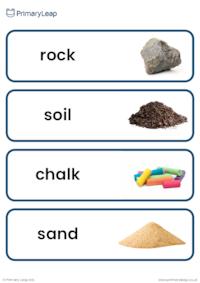
This handy, colourful set of flashcards is a fantastic resource to help teach children the main vocabulary for the topic - Rocks. Each card has a real image to illustrate the word. Vocabulary words include rock, soil, chalk, sand, sedimentary, granite, marble, fossil, moss, sandy soil, loamy soil, peat soil, slate, clay, rough, and smooth. Use these cards to discuss the topic of rocks with your children, display them around the classroom, or use them as a fun matching activity!
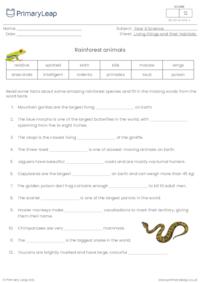
This cloze activity includes some interesting facts about rainforest species. Students read through the text and fill in the missing words using the word bank.
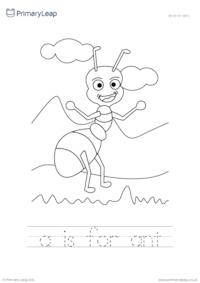
Children will love colouring this picture of a cute ant! Not only is the activity fun for children, but it will also help to improve their fine motor skills, handwriting, and reading skills.
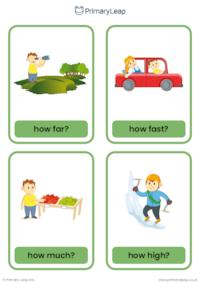
This handy set of flashcards includes HOW questions with colourful characters and pictures, the perfect resource cards for English language learning. There are 12 picture cards in this set.
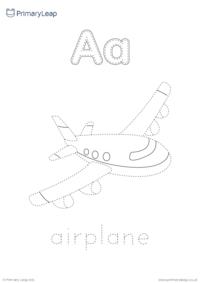
This fun and engaging letter A tracing worksheet includes an airplane to colour and the text 'Aa airplane' to trace over. Help your child build their letter formation skills and handwriting skills with this easy-to-print worksheet. Make use of this printable at home or at school.
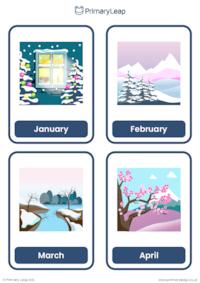
This colourful set of flashcards will help children to identify the months of the year. Each flashcard has an image to illustrate each month of the year.
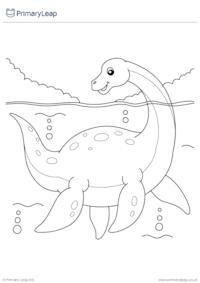
Colouring worksheets will help to develop your child's creativity, concentration, and motor skills. They're also fun to do and can be a great time saver! Download this fun colouring page of a Plesiosaurus for younger learners.
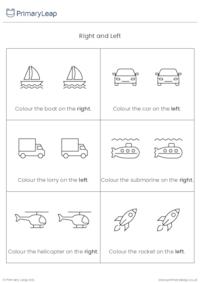
This handy resource can be used for a variety of activities with your little ones. This worksheet will help younger children understand left and right. Children read the instructions and colour the vehicles correctly.

This fun maths worksheet will help your preschoolers recognise circles. There is a tracing activity where children trace over the dashed lines to draw a circle and then spell the word. Children then circle all of the objects that are in the shape of a circle. This maths resource will help little ones recognise circular objects in their everyday lives.
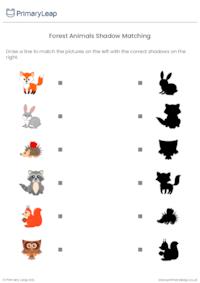
How do shadow matching activities help children? Shadow matching activities are great for a number of reasons. They help your little ones develop visual discrimination, visual memory, short-term memory, and pattern recognition. Use this worksheet with a group of children or individually. Students are asked to draw a line between the pictures of the forest animals and their corresponding shadows.
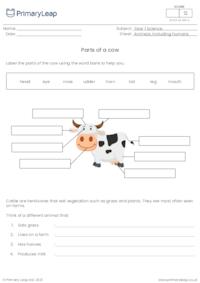
This fun activity asks children to label the different parts of a cow. They are also asked to think of and name 4 different animals with similar characteristics.

This word and picture matching worksheet is a fun and engaging activity that will help teach students about different wild animals. Children will love identifying the different wild animals and matching their names to the pictures. This is a fantastic resource that can be used at home or in the classroom.
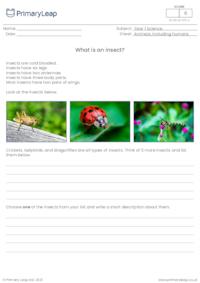
This activity includes some characteristics of insects. Children read through the information and think of 5 different insects. They are then asked to choose one of the insects they have listed and write a short description about them.
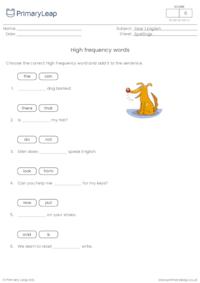
A helpful resource to help children read and write high frequency words. Children choose the correct high frequency word and add it to the sentence.
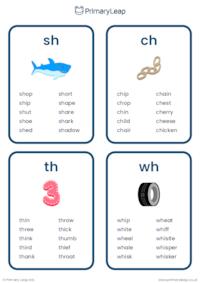
Students will enjoy learning these common digraphs. Each information card shows the digraph, 10 vocabulary words with that digraph, and a colourful picture. This set of flashcards includes the most common digraphs: sh, ch, th, wh, and ph.
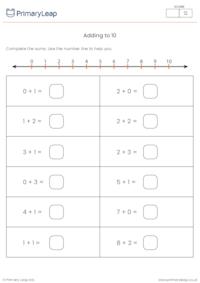
<p><b>Adding to 10 </b></p><p>This handy worksheet is great for your year 1 students to practise adding one-digit numbers to 10. There are 12 sums for children to complete and a number line from 0-10 is included to help them with their counting. </p>
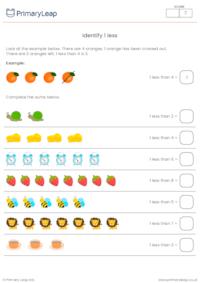
<p><b>Identify 1 less</b><br><br>With this colourful maths worksheet, students are asked to complete the sums and identify 1 less than a given number when counting objects. This will help them with subtraction later on. </p>
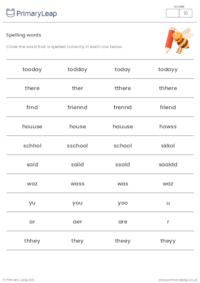
<p><b>Circle the word that is spelled correctly</b></p><p>Circling the correct spelling of a word can greatly benefit young learners in their spelling development. This activity allows them to visually compare different spelling options and choose the correct one in each row. Choosing the correct spelling promotes attention to detail and encourages children to pay close attention to individual letter formations. It also provides a structured and focused way for students to practice spelling independently.</p>

This is a great introduction activity to the life cycle of a frog. Students read through the text and answer the questions. There is a picture of the life cycle of a frog so students can see the different stages.
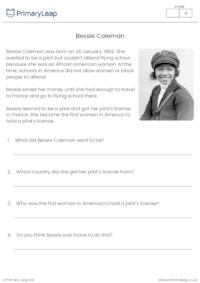
Bessie Coleman became the first woman in America to hold a pilot's license. This short reading comprehension is suitable for KS1 students. Children read through the article and answer four comprehension questions.
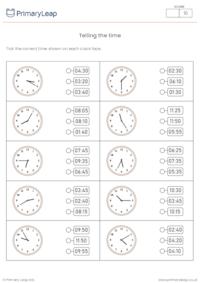
<p><b>Telling the time activity</b></p><p>This worksheet on time is a great activity for children to become fluent in telling the time on analogue clocks. Children read the analogue clocks and choose the correct time. </p>
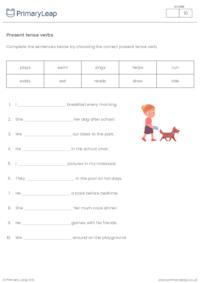
<p><b>Using the present tense verb</b></p><p>These sentences use present tense verbs to describe actions that are happening now or on a regular basis. Encourage your Year 2 students to practise using present tense verbs in their writing and speaking and look for present tense verbs in the books they read. This worksheet asks children to choose the correct present tense verb from the word bank to complete the sentences. </p><p>If you found this worksheet helpful, check out our <a href="https://primaryleap.co.uk/primary-resources/8243/year-2/literacy/vocabulary-grammar-and-punctuation/past-tense-verbs-cloze-activity" target="_blank">Past Tense Verbs Cloze Activity</a>.</p>
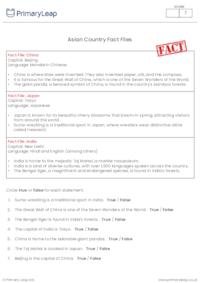
<p><b>Asian Country Fact Files</b></p><p>Pupils discover some interesting facts about China, India, and Japan. True or false statements encourage pupils to think critically and analyse the information they have learned about each country. They have to consider what they know to decide if the statement is true or false. Using true or false statements about China, Japan, and India creates an enjoyable learning experience for KS1 pupils, helping them develop their knowledge of these countries in an engaging way.</p>
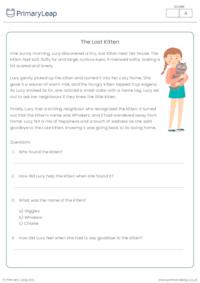
<p><b>The Lost Kitten Reading Comprehension</b></p><p>"The Lost Kitten Worksheet" invites young learners to explore compassion and responsible actions. Through Lucy's story, students will connect with the feelings of helping and the joy of making a positive impact. Children read through the heartwarming story and answer the questions. </p>
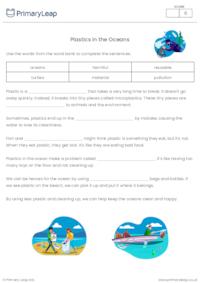
<p><b>Plastics in the Oceans</b></p><p>This handy geography worksheet will enhance students' understanding and knowledge about the critical issue of plastic pollution in the oceans. By filling in the blanks in this cloze activity, students will learn about why it's important to keep the oceans clean and how plastic can harm the animals that live there.</p>
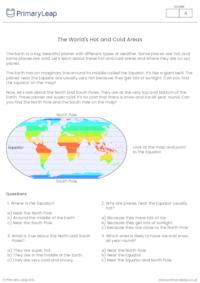
<p><b>The World's Hot and Cold Areas</b></p><p>This colourful engaging worksheet will help pupils identify the location of hot and cold areas of the world in relation to the Equator and the North and South Poles. Students read through the text and answer the multiple-choice questions. </p>
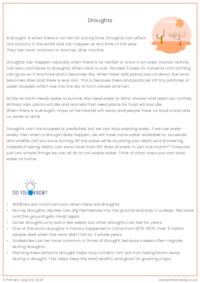
Students read through the information and facts about droughts and answer the accompanying study questions.

This fun spring themed colour by number activity will help children recognise numbers 1 - 9. Children follow the number and colour chart to colour the spring landscape.

Fossils are the remains or traces of animals and plants that lived a long time ago! Many fossils are buried under layers of mud and sedimentary rock. Students learn some interesting facts about body fossils and trace fossils and answer the multiple-choice questions.

This handy, colourful set of flashcards is a fantastic resource to help teach children the main vocabulary for the topic - Rocks. Each card has a real image to illustrate the word. Vocabulary words include rock, soil, chalk, sand, sedimentary, granite, marble, fossil, moss, sandy soil, loamy soil, peat soil, slate, clay, rough, and smooth. Use these cards to discuss the topic of rocks with your children, display them around the classroom, or use them as a fun matching activity!
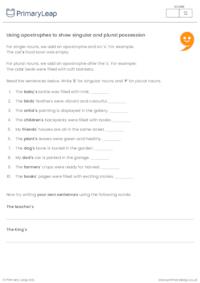
<p>Using apostrophes to show singular and plural possession</p><p>For single nouns, we add an apostrophe and an 's'. For example:</p><p>The cat<b>'s</b> food bowl was empty.</p><p>For plural nouns, we add an apostrophe after the 's'. For example:</p><p>The cat<b>s'</b> beds were filled with soft blankets. </p>
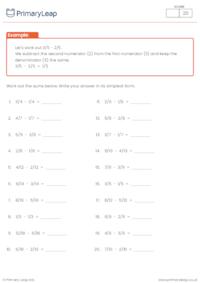
<p><b>Subtracting fractions</b></p><p>Let's work out 3/5 - 2/5. </p><p>We subtract the second numerator (2) from the first numerator (3) and keep the denominator (5) the same.</p><p>3/5 - 2/5 = 1/5 </p><p>Students solve each of these subtraction problems by subtracting the second numerator from the first numerator and keeping the denominator the same. </p>
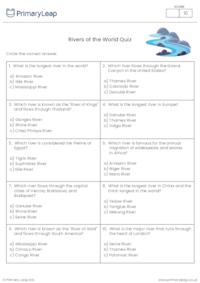
<p><b>Major Rivers of the World Quiz</b></p><p>This famous rivers quiz for KS2 pupils will introduce them to some of the world's most well-known rivers and their important roles in various countries. It's a fun and educational way for pupils to learn about geography and the significance of rivers in different parts of the world.</p>
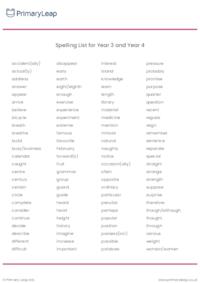
<p><b>Year 3 and 4 Spellings</b></p><p>Incorporating the Year 3 and 4 Spelling Word List into the curriculum fosters a strong foundation in language skills, enriches vocabulary, and promotes confident communication. This word list can be used to create weekly spelling lists for students. Each week, introduce a set of words and encourage pupils to practice spelling and understanding their meanings. The word list can serve as a foundation for expanding students' vocabulary.</p>
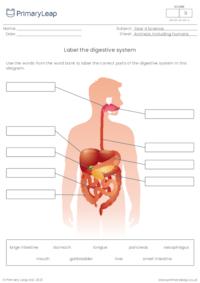
Children use the words from the word bank to label the correct parts of the digestive system in this diagram.
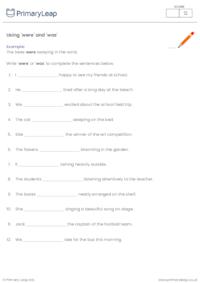
<p><b>Using 'was' and 'were correctly</b></p><p>Using "was" and "were" correctly helps convey information accurately and clearly. This handy English resource for lower KS2 asks students to complete the sentences by writing 'was' or 'were'. They must decide whether 'was ' or 'were' is the appropriate verb by writing the correct one in the spaces. "Was" is used for singular subjects (I, he, she, it), while "were" is used for plural subjects (they, we). </p>
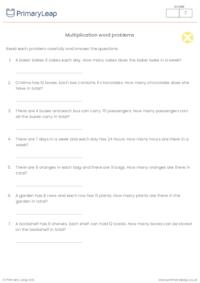
<p><b>Multiplication word problems</b></p><p>By solving multiplication problems, students develop a concrete understanding of how multiplication represents repeated addition or grouping. This handy maths resource has 7 multiplication problems for students to solve. </p>
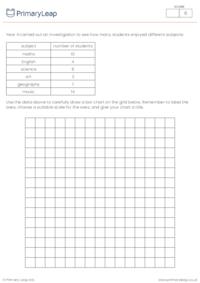
<p><b>Bar charts - Presenting data</b></p><p>Year 4 Statistics:</p><ul><li>interpret and present discrete and continuous data using appropriate graphical methods, including bar charts and time graphs.</li></ul><p>This year 4 maths worksheet is a handy resource for children to use to learn how to read and present data in their own bar chart.</p>
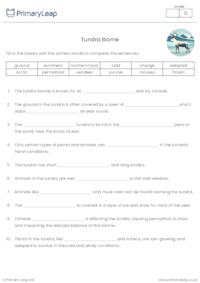
<p><b>Tundra cloze activity</b></p><p>This worksheet is designed to enhance your pupils' understanding of the unique characteristics, plant life, and animal adaptations that make the tundra such a fascinating and extreme environment. Through this activity, students will reinforce their knowledge of the tundra biome while practising important reading and comprehension skills. As students fill in the blanks with the appropriate words, they will demonstrate their understanding of key concepts related to the tundra biome.</p>
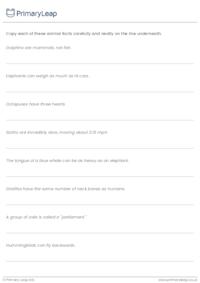
<p><b>Animal Facts Handwriting Workbook</b></p><p>This Year 4 Animal Facts Handwriting Workbook is a handy resource to not only improve students' handwriting skills but also introduce them to fascinating facts about creatures from around the globe. Pupils copy each animal fact carefully and neatly on the lines underneath. </p>
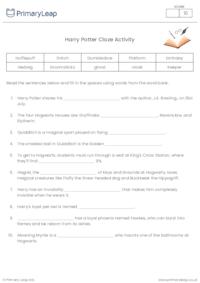
<p><b>Harry Potter Cloze Activity</b></p><p>These fun facts about Harry Potter should spark a child's interest in the magical world created by J.K. Rowling and could provide a great starting point for their journey into the series. This cloze activity offers a spellbinding way to enhance reading comprehension, vocabulary, and critical thinking skills while diving into the world of magic. Beyond simply filling in the blanks, this activity encourages critical thinking by prompting children to consider context and meaning while completing the fun Harry Potter facts. </p>
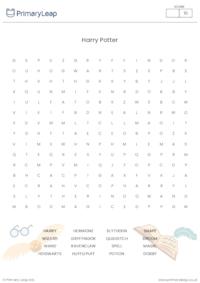
<p><b>Harry Potter Word Search Activity</b></p><p>Encourage students to find these magical words hidden in the puzzle. It's a great way to celebrate Harry Potter Book Day and engage young fans of the wizarding world!</p><p><b>When is Harry Potter Book Day?</b></p><p>Harry Potter Book Day takes place on the 12th of October, but you can celebrate on any day that suits you after the 12th of October too!</p>
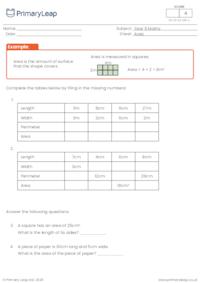
Students complete the tables by filling in the missing measurements and then answer the questions.
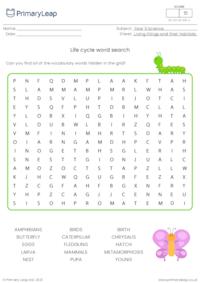
A fun activity that can be used when teaching students about the topic of life cycles. Students find all of the vocabulary words associated with animals and life cycles. Word searches are a great activity to improve vocabulary, memory, and spelling.
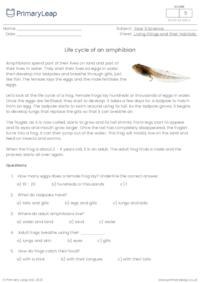
Amphibians spend part of their lives on land and part of their lives in water. Children learn about the life cycle of an amphibian and answer the accompanying questions.
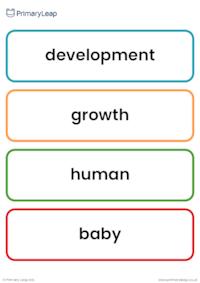
This set of colourful vocabulary cards are a great way of introducing scientific vocabulary to your pupils. You can display them in your classroom or use them as a fun matching activity. This set includes 3 pages of vocabulary cards that are associated with the unit - Animals including humans. They will help children recognise key words for this topic and improve their vocabulary and spelling.
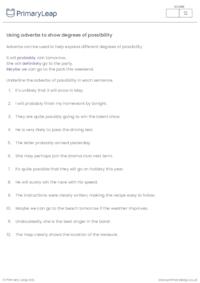
<p><b>Using adverbs to show degrees of possibility</b></p><p>Adverbs can be used to express different degrees of certainty or likelihood in a statement. Adverbs of possibility include: definitely, certainly, surely, maybe, clearly, obviously, perhaps, probably and undoubtedly. </p><p>With this upper KS2 literacy activity, students are asked to underline the adverbs of possibility in each sentence.</p>
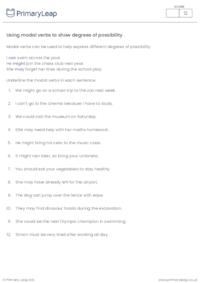
<p><b>Using modal verbs to show degrees of possibility</b></p><p>Modal verbs can be used to express different degrees of certainty or likelihood in a statement. Modal verbs of possibility include: definitely, certainly, surely, maybe, clearly, obviously, perhaps, probably and undoubtedly. </p><p><br></p><p></p><p>With this upper KS2 literacy activity, students are asked to underline the adverbs of possibility in each sentence.</p>
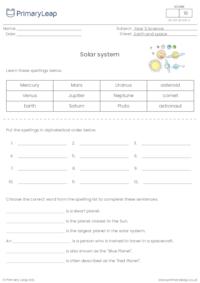
Spelling is important because it aids in both reading and writing. This spelling worksheet includes words associated with the solar system. Students learn the spelling and put them in alphabetical order, then fill in the correct word to complete the sentences. This resource can be used as a fun activity when teaching children the topic of earth and space.
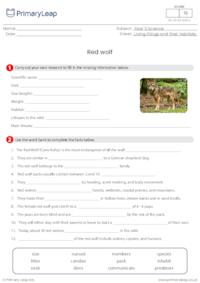
Did you know that the female red wolf gives birth to a litter of 4 - 6 pups? Students are asked to carry out their own research and then fill in the missing information using words from the word bank. This worksheet can be used to support the teaching of living things and their habitats to year five.
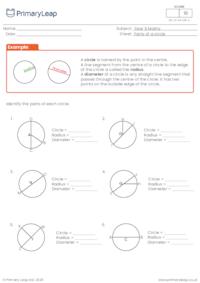
This maths resource asks students to identify the different parts of a circle: circle, radius and diameter.
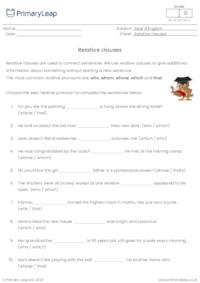
Relative clauses are used to connect sentences. We use relative clauses to give additional information about something without starting a new sentence. The most common relative pronouns are: who, whom, whose, which and that. This English resource asks students to choose the best relative pronoun to complete the sentences.
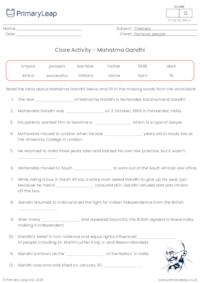
What is Mahatma Gandhi famous for? Where was he born? What happened to Gandhi? Students read through the facts about Mohandas Gandhi and fill in the missing words to complete the worksheet.

This fun word search includes words that are associated with exercise. See if your students can find all of the words hidden in the grid. To make it more interesting you could see how many words they can find in a given time!

This cloze activity includes some interesting facts about rainforest species. Students read through the text and fill in the missing words using the word bank.
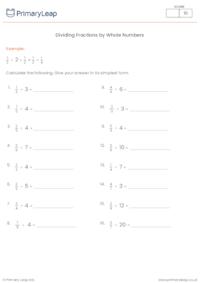
<p><b>Dividing Fractions by Whole Numbers</b></p><p>This maths worksheet for year 6 students will help them develop their understanding of dividing fractions by whole numbers. There are 16 questions for students to answer, giving lots of practice in dividing fractions. Use this handy worksheet in the classroom, at home, or set it as a homework assignment. </p>
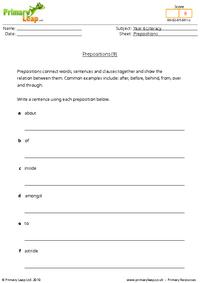
This worksheet includes six prepositions. Prepositions connect words, sentences, and clauses together and show the relation between them. Common examples include: after, before, behind, from, over, and through. Students must write a sentence using each proposition.
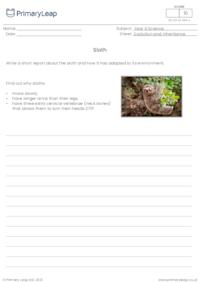
Children write a short report about the sloth and how it has adapted to its environment.
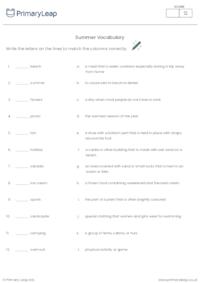
Students write the letters on the lines to match the columns correctly. This resource will help improve a child's vocabulary.
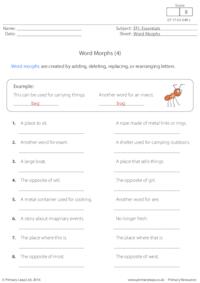
Word morphs are created by adding, deleting, replacing, or rearranging letters.
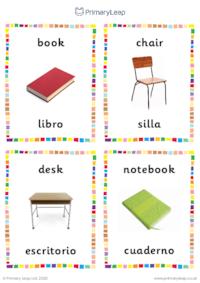
This colourful collection of flashcards includes 24 English to Spanish classroom vocabulary flashcards that can be easily downloaded and used at school or in the home. The flashcards can be used for vocabulary practise, drills, memorisation, and more!
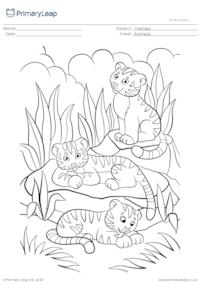
Students colour in the picture of three tiger cubs in the jungle.
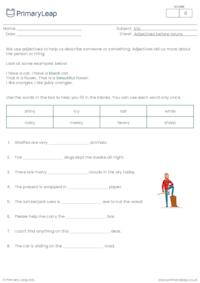
We use adjectives to help us describe someone or something. Adjectives tell us more about the person or thing. Students use the words in the box to help them fill in the blanks to complete the sentences. They can use each word only once. This handy worksheet is great for any grammar lesson and will help children practise using adjectives in their writing.
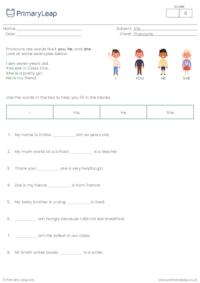
This printable worksheet covers pronouns. Pronouns are words like I, you, he, and she. This handy resource is perfect for ESL learners to study and understand pronouns. Students use the words in the box (I, you, he, she) to fill in the blanks.
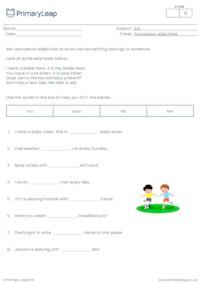
We use possessive adjectives to show that something belongs to someone. This handy ESL worksheet focuses on the possessive adjectives: my, your, his, and her. Students are asked to complete the sentences by writing the correct word.
Empowering parents and educators through thousands of quality learning contents created by teachers so every child’s needs and potential can soar with no boundaries.

An email has been sent to your account please activate your account to continue.

PrimaryLeap has introduced a new interactive learning platform and would like to offer you a completely Free Upgrade.
We understand that you may only want to use our services for worksheets and may not want to upgrade your account.
But if you are interested in trying out our new services then you're just a click away.
An email has been sent to your account please activate your account to continue.
You've answered
and have 2 Questions remaining
Import multiple students information through a CSV File. Browse or drag .CSV file below.